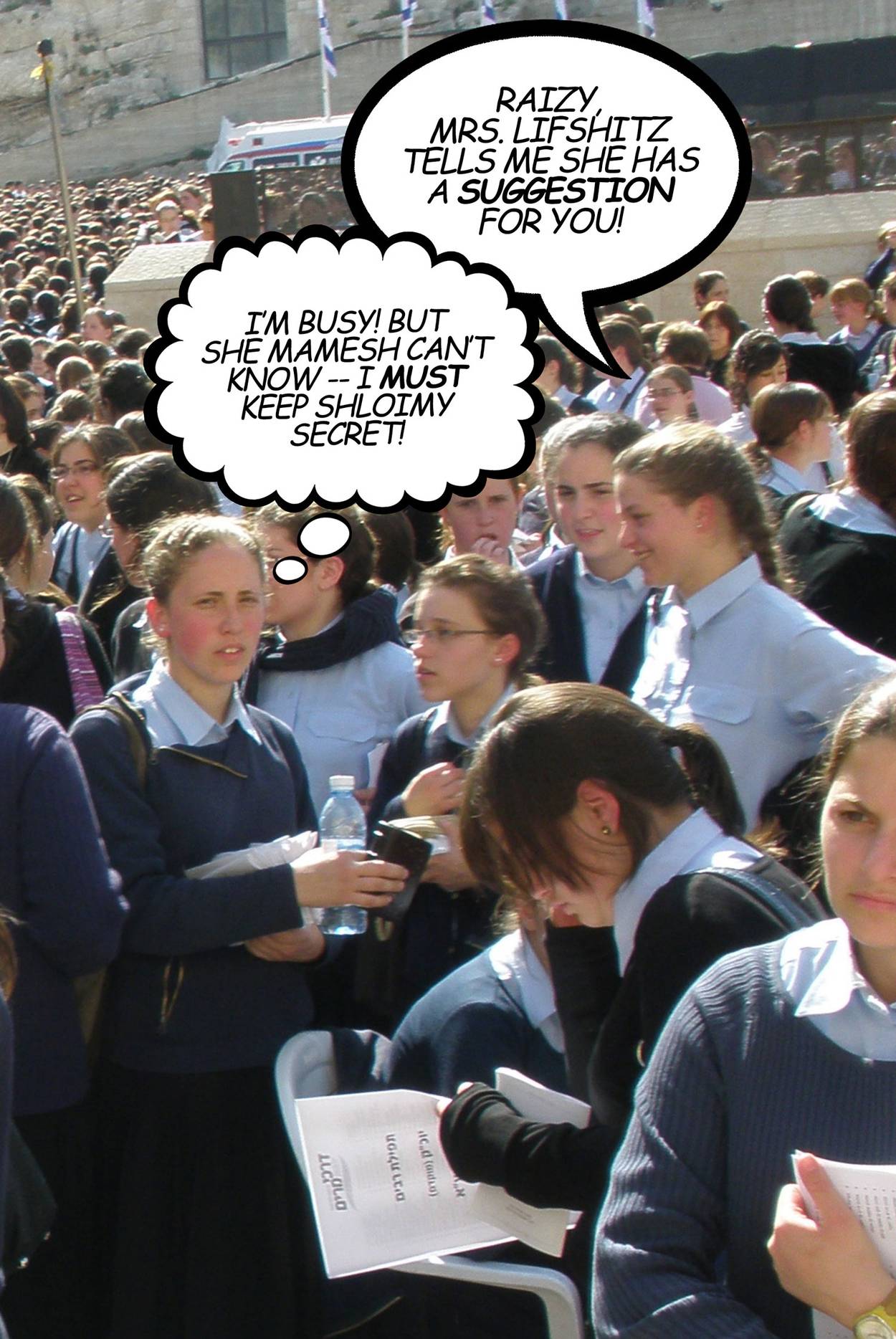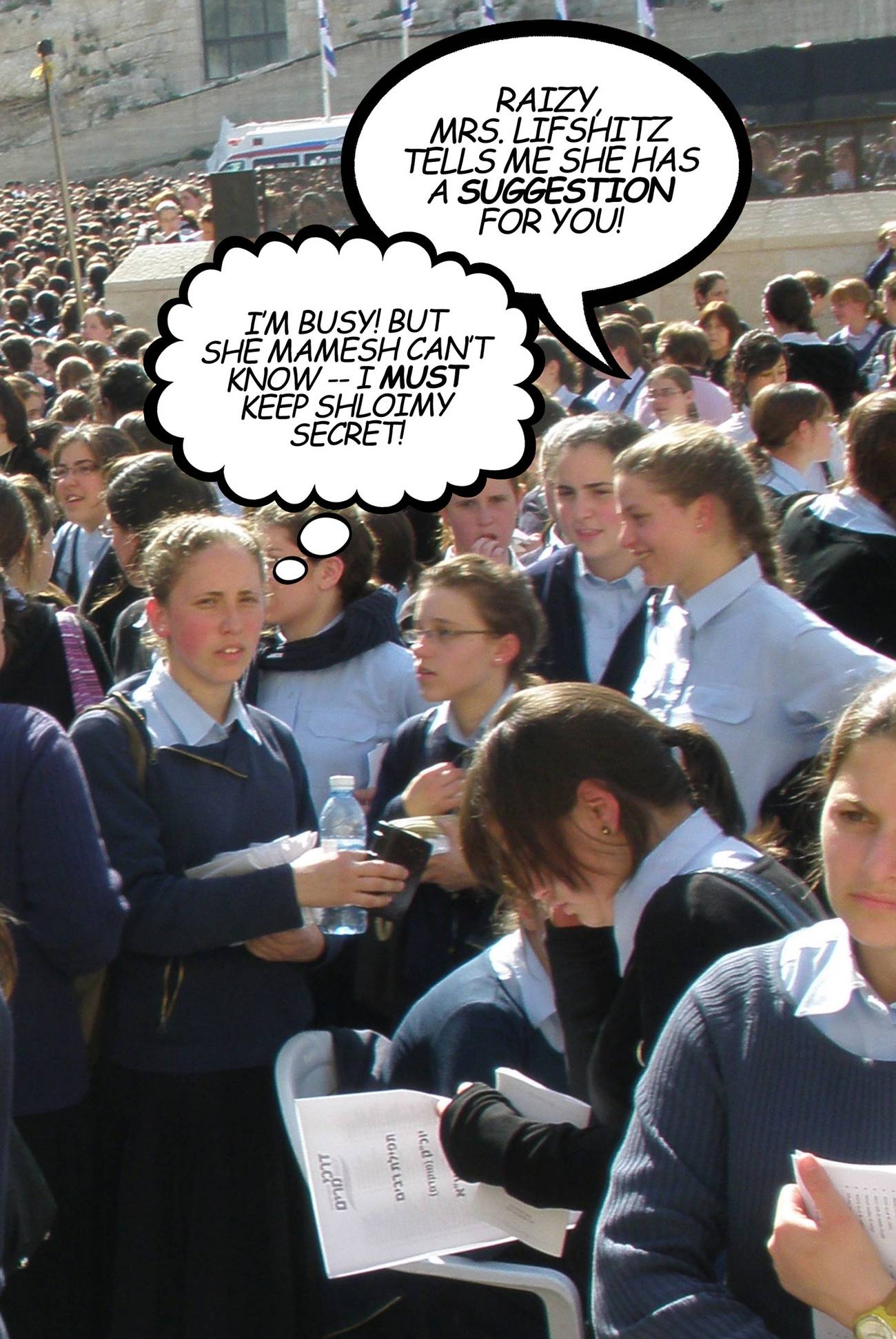Where Are the Yeshivish Writers?
Yeshivish literature has long been overlooked and oversimplified, but it’s a genre worthy of meaningful consideration




“Isn’t it true that only men speak Yeshivish?” my linguistics professor at Columbia University asked me on the first day of class. The question wasn’t out of place. Ever since Yeshivish earned proper-noun status, both those inside and outside the Orthodox Jewish community have stereotyped it as a male form of communication.
But like thousands of Orthodox women, I attended all-girls Bais Yaakov schools in which Yeshivish was essentially the main language. I recognize that mention of the language evokes an image of young men in white shirts and black pants filling a study hall with the tumultuous hum of Torah learning, but I consider myself (and many other women) an active participant in Yeshivish culture.
The Yeshivish language takes its name from the Hebrew word “yeshiva,” denoting an academy where men debate Jewish law with an English infused with Yiddish, Hebrew, and Aramaic. The Yeshivish language of the study hall has its own jargon and textual references. Its grammar and vocabulary have been recorded and the dialect is recognized as a peculiar phenomenon of the Orthodox Jewish world. But no one has yet paid homage to the Yeshivish language of the home, the supermarket, the world of sleep-away camp, matchmaking, and the myriad other areas of Jewish life. It is this form of Yeshivish that transforms the language from verbiage to the stuff from which culture is made.
“My whole family speaks Yeshivish,” I answered my professor. “When I sit at the Shabbos table, I can understand the men when they deliver a dvar Torah. Everyone is able to engage in the conversation.” Yeshivish women understand their male counterparts, even when the latter speaks about technical Torah subjects.
But even as I explained this out loud to the rest of the class, I knew that the scholarship suggests otherwise. In Sarah Bunin Benor’s notable assessment of the Philadelphia Orthodox Jewish community in Becoming Frum, she chooses only “to record and analyze the Orthodox language used among … men” studying Torah, and “did not analyze women’s language in this systematic way.” She emphasizes studying the speech of Yeshivish men because men study Talmud, and women don’t. This approach limits our understanding of Yeshivish to the context of male Torah study—the Yeshivish spoken in every other sphere of life has been treated only topically, at best. Consequently, the linguistic and cultural contribution of Yeshivish women remains uncharted territory.
The first dictionary of Yeshivish, titled Frumspeak, was also compiled under dubious circumstances: Chaim M. Weiser corralled a class of high school yeshiva boys to record all the Yeshivish words they use over the course of a week. When the week was over, the list was collated and the dictionary was created. This dictionary is an excellent window into a particular subset of the Yeshivish community—namely, teenage boys—allowing us to learn words like “greasy” (which the dictionary defines as “overly fanatical or religious”). However, I would hardly call this book fully representative of the wide spectrum of Yeshivish language use.
Moreover, though he assembled the first-ever dictionary of Yeshivish, Weiser is reluctant to call Yeshivish a bona fide language. In the introduction to Frumspeak, published in 1995, Weiser writes: “There are no Yeshivish writers. The lack of Yeshivish literature means that Yeshivish speakers have no classical, masterful formulations to emulate in developing language competence. This fact severely challenges the legitimacy of counting Yeshivish as a viable language.”
Since there is no literature, no identifiable genre that one can point to as distinctly Yeshivish, the vernacular remains purely oral: abstract, fleeting, gone the moment the speaker has finished an utterance. Yeshivish cannot be considered established like standard English; rather, this mishmash of foreign tongues and scrambled grammar only constitutes the illegitimate language of a minority culture humored by a benevolent host country.
And yet the question must be asked: Is Chaim M. Weiser’s claim still correct today? Are there really no Yeshivish writers?
At this point, we must look to the developing literary scene in the Jewish Orthodox English-reading world. Weiser made his assertion in 1995. Nearly a decade later, in 2004, Mishpacha magazine, which originally began as an Israeli publication in 1984, launched an English edition. Mishpacha immediately became popular in English-reading Orthodox Jewish communities around the world, effectively sparking the Jewish Orthodox magazine industry. In 2006, Mishpacha magazine expanded to include Family First, a magazine geared specifically to Jewish women and girls. The magazine Binah, another weekly publication for Jewish Orthodox women, was also founded in 2006. Ami magazine launched in 2010, accompanied by the women’s magazine Ami Living.
It is in this space, the women’s magazine—where Yeshivish fiction writing begins to establish itself as a genre. The stories printed in the pages of these magazines are predominantly written by and for Yeshivish women. After all, the general expectation for men in the Yeshivish community is that they devote their time to Torah study, not reading fiction. Yeshivish literature often appears as serials in women’s magazines and are later published as novels by Orthodox Jewish publishing houses. These books occupy the shelves of Judaica bookstores and can sustain an entire community’s literary intake.
Identifying these novels as a distinct literary category is important for a community that is often represented to the world by others. After all, the term “Orthodox Jewish literature” is mainly associated with the secular mainstream as constituting the memoirs of people who have abandoned the community. Instead, Yeshivish stories retain a uniqueness, reflecting the values and beliefs embedded in this community, and providing space for its members to reflect and imagine: How is life really, and how should it be?
Like any other genre, Yeshivish literature has distinctive features. It closely mirrors the spoken language and incorporates loanwords from Hebrew, Yiddish, or Aramaic. These words might have easy English equivalents, like the exchange of the English word “really” for the Hebrew word mamesh in the sentence “I mamesh loved that book.” Choosing to inflect speech or writing with these Yeshivish words sets one apart as distinct, and intentionally so—the Yeshivish community prides itself on remaining internally connected and separate from the outside world. There are also Yeshivish words that don’t have a simple English translation. A blech (from Yiddish) is “a thin, flat sheet of metal that observant Jews place over a stovetop so that they can heat up food according to Jewish law on the Sabbath.” That definition is a mouthful, and, worse, it’s a sterile definition. The participants in a culture have no need for such things.
Still, it’s important to remember that the foundation of Yeshivish is based on English, and that the Englishization of Yeshivish occurs when English grammar rules are inevitably applied to Yeshivish words. For example, the word “davening” is formed from the Yiddish word “daven” (to pray) and the English gerundial suffix “ing,” which translates “davening” as an equivalent to “praying.” Another example is the construction of the word “halachically.” Halacha is the Hebrew word for “Jewish law,” the “ic” English suffix makes the word an adjective, and the additional “ally” English suffix transforms the word into an adverb. Yeshivish literature incorporates these structures seamlessly, layering the narrative with an added measure of reference.
The opposite happens as well; the Yeshivishization of English is the result of the community taking hold of plain English words and imbuing them with a culturally specific meaning that makes them understood only within a Yeshivish context. The “in-town” and “out-of-town” dichotomy is one important example that is central to Yeshivish ideology. The “in-town” mainstream is based in the tri-state area, but mainly New York, creating the standards and rules that every Orthodox Jew who lives inside or outside New York complies with—ranging from fashion to food. (This is also why—as any real in-town Jew knows—Bunin Benor’s research on the Orthodox Jewish community of Philadelphia is only a pale imitation of the “true” lifestyle and language to be found at the source, in places like Brooklyn, Monsey, and Lakewood.)
In Yeshivish, some English words have a very specific connotation. To tell someone, “I have a suggestion for you” can only refer to an idea of a possible spouse, and the answer: “I’m busy” means that the speaker is currently dating someone. Yeshivish has managed to capture its culture through the combination of English words to create new phrases, coining terminology that represents the uniqueness of the lifestyle.
On the written page, the genre of Yeshivish writing is visually distinctive, incorporating a seemingly inconsistent stance on the use of italicizations. For example, a sentence in a Yeshivish story might read: “That Shabbos morning, she davened from her bubbe’s siddur.” Italicizing something marks a word as foreign and different. It’s peculiar that for a community writing for itself, there is still a tendency to recognize words that aren’t naturalized into the English language. The New York Times might serve as a barometer to demonstrate which Yeshivish words have been accepted by the mainstream, like shlep or dreidel. Even so, Yeshivish italicization still isn’t consistent—many authors individually decide which words are worthy of the slant. Italicizations in Yeshivish literature demonstrate the diasporic reality of a minority culture reckoning with their identity in the space provided to them.
At the same time, Yeshivish writers (and speakers, of course) exhibit a facility with the English language and ability for wordplay, apparent in the plethora of Yeshivish acronyms and epithets that the community creates. Several of these include: FFB or “frum [religious] from birth,” IYH or “im yirtzeh Hashem” (God-willing), and OTD or “off the derech” (literally “off the path,” referring to someone who is no longer orthopractic).
The Yeshivish language additionally allows for the heightened ability to signal religious distinctions. In Hebrew, the word “seforim” refers to both secular and holy texts, and in English, the word “books” encompasses both meanings, as well. Contrary to those who say that Yeshivish is inexpressive compared with English, Yeshivish can differentiate between these two categories more quickly than someone who speaks Hebrew and someone who speaks English: In Yeshivish, “seforim” only refer to Jewish works and “books” can only mean secular texts.
The genre of Yeshivish literature is still young. The past couple of decades have allowed authentic voices from within the Orthodox Jewish community to tell their stories and reckon with topics that haven’t yet been meaningfully explored. A story might tell of the dilemma a married couple faces when the husband receives a promotion in the kollel but he learns that it is contingent on removing internet from the home, an issue for his breadwinning wife who supports the family as an influencer on her lucrative Instagram account. A story like this represents the issues that might—and, indeed, do—occur in the life of an American Orthodox Jew.
Treating Yeshivish literature as a genre worthy of significant consideration is important not only because this writing is mostly the work of Orthodox Jewish women—whose effort to be seen as equal participants in the community’s culture is a current and pressing issue—but because the self-expression of these writers provides valuable insight into the community’s approach to storytelling. Instead of deeming both the Yeshivish language and its literature as subpar substitutes to standard American English, investigating its writing reveals the richness of the community’s culture. Yeshivish literature conveys a reality that is worthy of validation, serious analysis, and—if we travel down the course of literary development—perhaps even canonization.
Chaya Sara Oppenheim is editor of The Shekel, a numismatic journal. She holds a B.A. in English and history from Barnard College.